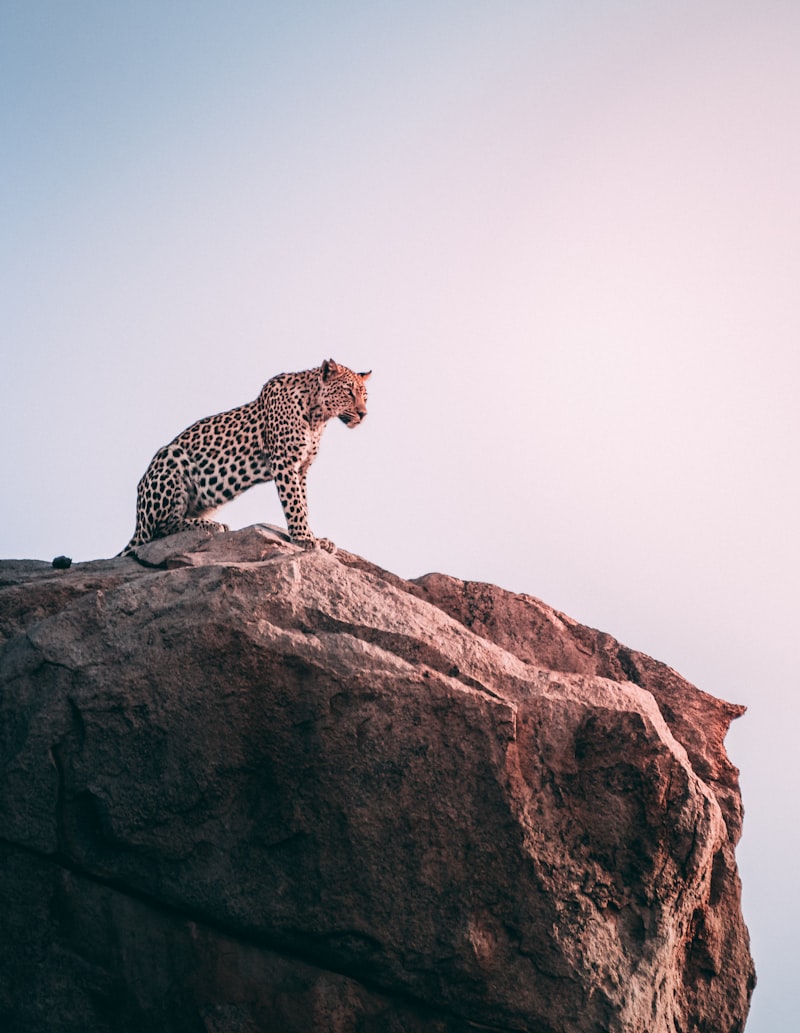Imagine a raccoon prowling through garbage cans or a peregrine falcon nesting atop a skyscraper—these are not just random occurrences but examples of how wildlife has adapted to urban life. Molecular ecology dives deep into understanding these adaptations at a genetic level, unraveling the secrets of survival in an environment dominated by humans.
One of the key aspects studied in molecular ecology is how urbanization impacts the genetic diversity of wildlife populations. Typically, urban environments fragment natural habitats, isolating populations of species into smaller pockets. This isolation can lead to reduced genetic diversity within these populations, which is crucial for their long-term viability and adaptability.
Researchers use advanced techniques to analyze the genetic makeup of urban wildlife. By studying DNA samples from different populations within cities, they can track how genetic diversity changes across urban landscapes. This information helps conservationists make informed decisions about managing urban wildlife populations and preserving genetic diversity.
Moreover, molecular ecology sheds light on the interactions between urban wildlife and their environment. For instance, scientists study how pollutants and toxins in urban areas affect the genetic health of wildlife. This research is vital for understanding the overall health and resilience of urban wildlife populations facing unprecedented environmental challenges.
Unraveling Urban Wildlife Mysteries: The Molecular Ecology Approach
Imagine a raccoon scavenging through your neighborhood at night. To understand its behavior, scientists use molecular ecology to analyze its DNA. By studying genetic markers, researchers can track where these animals come from, how they move through urban landscapes, and even their interactions with other wildlife. It’s like uncovering a secret code that reveals their hidden lives.
Cities present unique challenges for wildlife. As green spaces shrink and buildings rise, animals must adapt quickly. Molecular ecology helps us grasp these adaptations on a genetic level. For instance, it shows how some species evolve to tolerate pollution or shift their foraging habits to survive in an urban environment. It’s evolution in action, right in our backyard.
But why does this matter? Understanding urban wildlife isn’t just about curiosity; it’s crucial for conservation. By knowing how animals thrive or struggle in cities, we can develop better strategies to protect them. Think of it as solving a puzzle where each genetic clue brings us closer to preserving biodiversity in urban areas.
The beauty of molecular ecology lies in its precision. By analyzing DNA samples from different city regions, researchers can map out wildlife corridors and identify key habitats. This knowledge helps urban planners create green spaces that benefit both humans and wildlife—a win-win situation for biodiversity conservation.
In essence, molecular ecology is unraveling the intricate tapestry of urban wildlife. It’s about using cutting-edge science to decode nature’s responses to urbanization. So next time you spot a fox darting across a city park or hear the chirp of a bird nesting on a high-rise balcony, remember that beneath their wild exterior lies a genetic story waiting to be told.
DNA Detective: Tracing Urban Wildlife Through Molecular Ecology
In bustling cities, wildlife often thrives unnoticed, blending into the urban landscape. From coyotes in Chicago to peregrine falcons in New York City, these creatures navigate a concrete jungle alongside humans. Understanding their behavior and movements is crucial for conservation efforts and coexistence.
Molecular ecology uses DNA extracted from environmental samples like soil, water, or even air to identify species present in an area. Imagine collecting a handful of soil from a park where fox sightings have been reported. Even without spotting a single fox, scientists can analyze the DNA in that soil to confirm their presence.
This technique goes beyond visual surveys, offering a non-invasive and accurate glimpse into wildlife habitats. It’s like solving a mystery using genetic clues left behind by animals themselves. Each species leaves a unique genetic fingerprint in its surroundings, allowing scientists to create a biodiversity inventory without disturbing the wildlife.
But how does it work exactly? Every organism sheds DNA through skin cells, fur, feathers, feces, or saliva. This environmental DNA (eDNA) persists in the environment, providing a snapshot of species diversity over time. By extracting and analyzing this eDNA, scientists can reconstruct which species have been in an area recently.
Think of it as reading a story written in genetic code. Just like a detective gathers evidence to solve a case, molecular ecologists gather DNA evidence to uncover the hidden world of urban wildlife. Whether it’s identifying rare species or tracking invasive ones, DNA analysis helps paint a clearer picture of biodiversity in cities.
Moreover, this technology is advancing rapidly, becoming more sensitive and cost-effective. It allows researchers to monitor changes in wildlife populations and habitats over time, essential for making informed conservation decisions. By understanding where and how animals move through urban environments, we can better design cities that accommodate both humans and wildlife.
Genetic Signatures in the Concrete Jungle: Urban Wildlife Molecular Ecology
Imagine a raccoon scavenging through a dumpster behind your favorite pizza joint. What genetic adaptations enable it to thrive amidst the noise and artificial lights of the city? Urban Wildlife Molecular Ecology seeks to unravel these mysteries. It’s like peeking into a secret code that animals develop to survive and even thrive in urban environments.

One of the key focuses of this research is understanding how urbanization influences genetic diversity among wildlife populations. In the wild, animals have large territories to roam, facilitating genetic exchange. However, cities fragment these habitats, isolating populations and potentially reducing genetic diversity. This can have long-term implications for the health and adaptability of urban wildlife.

Take the example of urban birds. Some species have developed unique genetic traits that make them less sensitive to noise pollution. It’s akin to evolving a genetic mute button to drown out the constant hum of traffic. This adaptation not only helps them communicate effectively but also improves their chances of finding mates and raising offspring successfully in a noisy urban environment.
Moreover, studying genetic signatures in urban wildlife can provide crucial insights into broader ecological patterns. By analyzing DNA samples collected from different urban habitats, researchers can track how species move and adapt over time. It’s like assembling a genetic puzzle that tells the story of urban evolution.
From Pavement to Park: Insights from Molecular Ecology on Urban Wildlife
Urbanization has transformed our landscapes, turning once-natural habitats into concrete jungles. Amidst this urban sprawl, wildlife has adapted in remarkable ways, offering insights into the resilience of nature in the face of human development. Molecular ecology, a field blending genetics with ecological principles, provides a fascinating lens through which to view these adaptations.
In cities worldwide, green spaces like parks and gardens act as refuges for wildlife. These pockets of green not only provide havens for birds and small mammals but also serve as natural laboratories for scientists studying urban ecology. Molecular ecology techniques, such as DNA analysis and genetic mapping, have unveiled surprising details about how urban wildlife thrives amidst the hustle and bustle of city life.
Imagine a fox navigating its way through back alleys and parks, adapting its behavior and diet to coexist with humans. Molecular studies reveal that urban foxes exhibit genetic adaptations that differ from their rural counterparts. These adaptations might involve changes in genes related to diet or stress response, allowing them to capitalize on urban food sources and cope with environmental stressors unique to city life.
Moreover, birds like the common pigeon, once thought of as purely urban dwellers, show genetic diversity that suggests interactions with rural populations. This intermingling of genes between urban and rural populations provides clues about migration patterns and the flow of genetic information in fragmented habitats.
Molecular ecology not only sheds light on how urban wildlife survives but also informs conservation efforts. By understanding which genetic traits enable species to thrive in urban environments, scientists can better predict how other species might adapt to future urbanization. This knowledge is crucial for designing urban landscapes that support biodiversity while accommodating human needs.
Frequently Asked Questions
How does urbanization affect the genetic diversity of wildlife populations?
Learn how urbanization impacts the genetic diversity of wildlife populations. Discover the effects of urban growth on genetic variation within species, including factors such as habitat fragmentation, gene flow barriers, and population isolation. Explore how these changes can affect species’ adaptability and long-term survival in urban environments.
How do researchers use DNA analysis to study urban wildlife populations?
Learn how researchers utilize DNA analysis techniques to study urban wildlife populations, revealing insights into species diversity, distribution patterns, and interactions within city environments.
What is molecular ecology and how does it apply to urban wildlife?
Molecular ecology investigates genetic interactions within populations and species. It applies to urban wildlife by studying how genetic diversity and adaptation influence survival in urban environments.
What are the implications of molecular ecology findings for urban wildlife conservation?
Discover how molecular ecology findings impact urban wildlife conservation efforts, offering crucial insights into genetic diversity, population dynamics, and adaptation strategies within urban environments.
What are the key methods used in molecular ecology studies of urban wildlife?
Explore the primary methods employed in molecular ecology studies of urban wildlife, including DNA sequencing, microsatellite analysis, and environmental DNA (eDNA) sampling. These techniques help researchers understand genetic diversity, population dynamics, and interactions within urban ecosystems.



